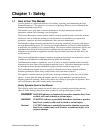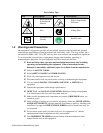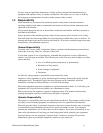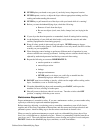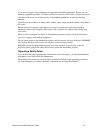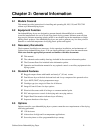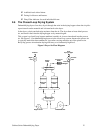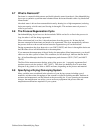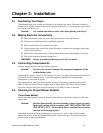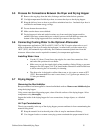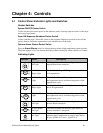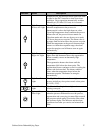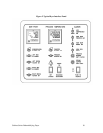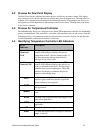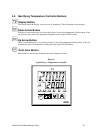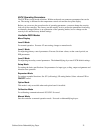
Cabinet Series Dehumidifying Dryer 14
Chapter 3: Installation
3-1 Positioning Your Dryer
The dehumidifying dryer system was designed to be wheeled into place. The entire assembly is
mounted on a rugged, compact frame and is equipped with sturdy, 4” (10 cm) heavy-duty casters,
two locking and two swivel.
Caution!
Use caution and observe safety rules when placing your dryer!
3-2 Making Electrical Connections
; Fulfill all national, state, and local safety and electrical code requirements.
; Connections should be made by a qualified electrician.
; Make sure all electrical connections are tight.
; Connect main power to the dryer at the disconnect or terminals in the upper right corner
of the control enclosure.
; Install a fused disconnect with a lockout feature in the power main leading to the dryer.
; The power drop must include a ground wire.
WARNING!
Proper grounding of the main power line is critical!
3-3 Connecting Compressed Air
Connect compressed air to the dryer before operation.
Caution!
Excessive air pressure damages the neoprene components of the
air distribution valve.
Connect the air supply, using a ¼” NPT fitting, to a clean, dry, lightly lubricated source of 80 psi
(551 kPa/5.51 bars) compressed air. A pressure gauge and regulator are recommended
components of your plant air supply.
The compressed air indicator switch prevents the dryer from starting without an 80 psi (551
kPa/5.51 bars) air supply. If the air supply drops to below 60 psi (413 kPa/ 4.13bars) during
operation, the dryer shuts down until at least 80 psi (551 kPa/5.51 bars) is restored.
3-4 Checking for Proper Blower Rotation
Three-Phase Models
The blower rotates properly when air flows from the delivery outlet and a vacuum is felt on the
blower inlet.
Caution!
In three-phase models, incorrect phasing of power leads can cause
backward rotation of blower motors and CONTAMINATION OF
THE DESICCANT! Always check blower rotation before putting
material in the drying hopper!
If the three-phase blower rotates improperly, reverse any two wires at the fused disconnect
outside the dryer or at the disconnect/terminal in the control enclosure. This assures that the
blower rotates in the proper direction.



